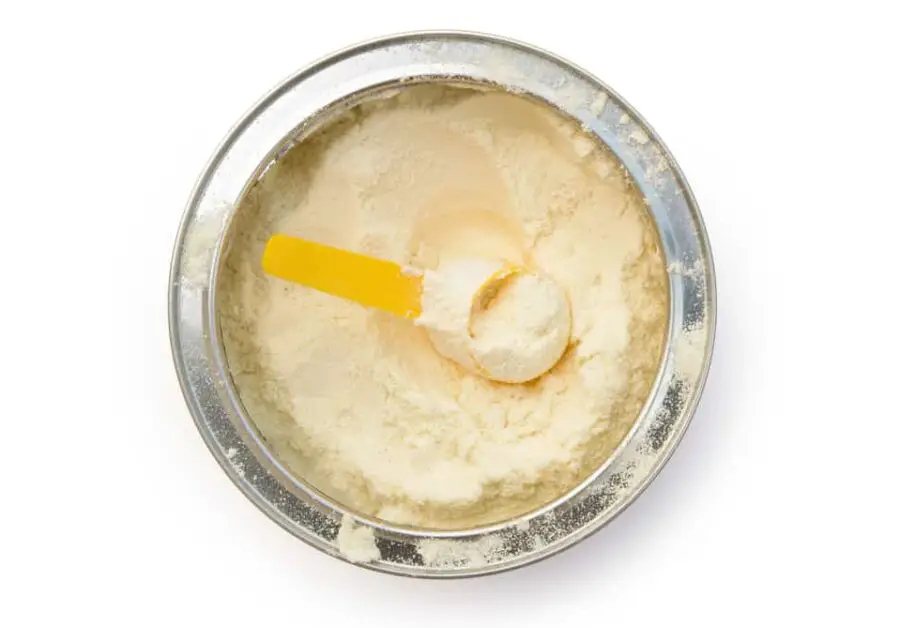For malted milk lovers like me, the taste of it truly can’t be beat.
Malted milk powder has an earthy, nutty flavor thanks to the blends of wheat flour and malted barley that is used to make it. While small taste variations exist from one brand to another because of the amounts of milk and salt used, the finished product has a roasted taste and a rich creamy, almost umami taste profile to it.
The challenge with finding a good substitute for malted milk powder is finding something that comes close to the unique taste of malt.
While nothing will be exactly like it, hopefully some of the options below will get you close.
1. Making it Yourself
This option will probably be your least expensive and quickest one which is why it’s first on the list. But before we get into exactly how it’s done, there is one other thing to keep in mind and that’s what type of malt powder you should be using – diastatic or non-diastatic.
Diastatic Malt Powder vs Non-Diastatic Malt Powder
One thing to keep in mind when buying malt powder is that there are a couple of different types – diastatic and non-diastatic. While both are available in powdered form, there are some important differences between them.
Diastatic malt powder has an ability to speed up the conversion of starches into sugars thanks to active enzymes contained within it. This action results in dough that is lighter and rises more quickly. It’s most often used in baking when flour is missing the addition of barley malt. Throughout the fermentation period, the enzymes present help the yeast grow to its fullest.
In contrast to diastatic malt powder, non-diastatic malt powder is noticeably sweeter. If it’s the distinctive malt flavor you want, then this type of malt powder is what you’ll want to choose. Besides the flavor, non-diastatic malt powder is sweeter.
Once you’ve decided which kind is right for you, you’ll also need instant powdered milk.
For substitutions, use one cup of malt powder to every three tablespoons of instant milk.
| Type of Malt Powder | Characteristics | Use |
|---|---|---|
| Diastatic Malt Powder | Contains active enzymes that speed up conversion of starches to sugars, results in lighter dough and quicker rising. Often used in baking when flour is missing barley malt. | Best for dough-based recipes and baking. |
| Non-Diastatic Malt Powder | Noticeably sweeter, and imparts a distinctive malt flavor. | Best for adding malt flavor and sweetness to recipes. |
| Malt Powder | Instant Milk | |
|---|---|---|
| Substitution | 1 cup | 3 tablespoons |
2. Ovaltine
You’re probably already familiar with the yummy deliciousness of Ovaltine since it’s been sold around the world for more than 100 years.
It was created in Switzerland, where it was originally known as Ovomaltine and created from of a blend of eggs and malt. The term Ovomaltine is a derivative of a Latin term, ovum, or egg.
Keep in mind that there are two types of Ovaltine available today – Classic Malt and Chocolate.
Of the two options, you’ll have an easier time using Classic Malt vs. Chocolate for obvious reasons because if your recipe doesn’t call for chocolate, then you wouldn’t want to use the chocolate-flavored one.
While Ovaltine has malt extract in it, it doesn’t contain milk powder. If you need that, you will need to add it in separately. Ovaltine also contains whey and sugar so make your adjustments accordingly.
Fun fact! Did you know that in Ovaltine is banned in the countries of Canada and Denmark? The reason for the ban is that both countries have strict guidelines with foods that are enriched, or fortified, with vitamins or minerals.
| Type of Ovaltine | Characteristics | Use |
|---|---|---|
| Classic Malt | Rich malt flavor, does not contain chocolate. | Best for recipes that require malt flavor but not chocolate. |
| Chocolate | Rich malt and chocolate flavor. | Best for recipes that require malt and chocolate flavor. |
| Additional Information | Description |
|---|---|
| Origin | Created in Switzerland, derived from a blend of eggs and malt. |
| Availability | Two types: Classic Malt and Chocolate. |
| Ingredient | Contains malt extract, but not milk powder and whey and sugar. |
| Fun Fact | Banned in Canada and Denmark due to strict guidelines with foods that are enriched or fortified with vitamins or minerals. |
3. Malt Syrup
While malt syrup is a close taste match to malt powder, it’s in the form of a syrup so you’ll need to determine whether it’s an acceptable option for your recipe. If you’re simply blending it into a beverage to enjoy, this isn’t an issue.
For baking purposes, you’re going to need instant powdered milk as well.
| Malt Syrup | Characteristics | Use |
|---|---|---|
| Malt Syrup | Tastes similar to malt powder but in liquid form | Best for adding malt flavor to beverages. Not recommended for baking unless used with instant powdered milk. |
4. Maca Powder
Maca powder isn’t an ingredient most of us have lying around our kitchen cabinets but if you do, it does have a close flavor profile to malt powder. It’s a little on the nuttier side but it still possesses hints of malt amid its earthy taste.
Being a powder, it’s a little easier to use in recipes but as with the other subs in this article, Maca powder doesn’t contain any milk in it, so you’ll need to add instant milk to make the most of it.
| Maca Powder | Characteristics | Use |
|---|---|---|
| Maca Powder | Nutty flavor with hints of malt and earthy taste | Can be used in recipes as a malt powder substitute, but does not contain milk, so needs to be combined with instant milk for best results. |

Hiya! I’m Kimberly, a contributing writer here at Miss Buttercup. I was born and raised in the UP, Michigan’s Upper Peninsula for those who don’t know, the land of beautiful, beach-filled sunny summer days and bone-chilling long winters. Growing up there made me appreciate all the little things about life, especially the way a delicious meal can bring people closer together. I try and put that same feeling into each article I write and I hope it comes across that way!

